Overcoming the emotional consequences of stoma formation (and of the illness that led to it) is often a complex and long-term struggle, with many ups and downs. People with a stoma may experience euphoria when they recover from the original illness or when they master changing their pouch independently, but they then might crash months later as they realise that the stoma is there to stay. When people who have experienced something as traumatic as major surgery are going through the motions of daily life, they may still be going through real psychological challenges, with a greatly reduced self-esteem.
Doing our homework
I work as a stoma care nurse and play/creative arts therapist with a master’s degree in bereavement and loss. I have also been an ostomate for the past 15 years, and I have personal experience of feelings that were sometimes difficult to describe in words. This led me to read up on other forms of therapeutic communication, particularly writers who have suggested that communicating can be made easier and more direct through the use of symbols and images. This included Barbara Thompson and Robert Neimeyer, who explained how art can allow for the expression of inner experiences that are beyond words,1 as well as Nancy Boyd-Webb, who described how art can be used as a valuable tool for symbolic communication without direct reference to a particular topic.2
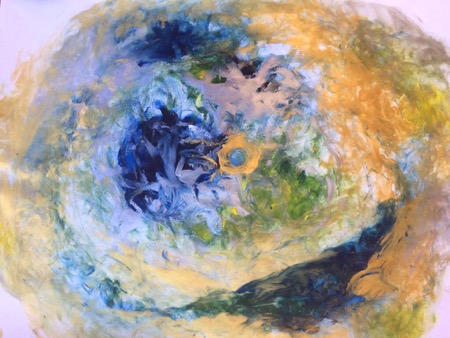
A painting showing how free art can voice traumatic emotions and depict emotional growth
Setting up
The role of the stoma care nurses is not just to help people cope, but to allow them to actively engage in life. This reading led me to set up a series of creative arts workshops for to help fellow ostomates explore their surgery and its effects in a safe, non-judgemental environment. The workshops were free to attend and open to those who had had a stoma for longer than 6 months. Funding was provided by St Vincent’s University Hospital and the Stoma Care Advisory Service, both in Dublin, Ireland. Participants were divided into groups of up to 12 people, and each group was offered a series of six workshops. This would allow some flexibility to adjust the plan for each group to suit the needs of its members. To ensure a safe space for participants, I emphasised to the group that confidentiality was of utmost importance and that everyone should be treated fairly, equally and with respect. Importantly, a venue was chosen with peaceful surroundings that would create a meditative setting and a feeling of safety.
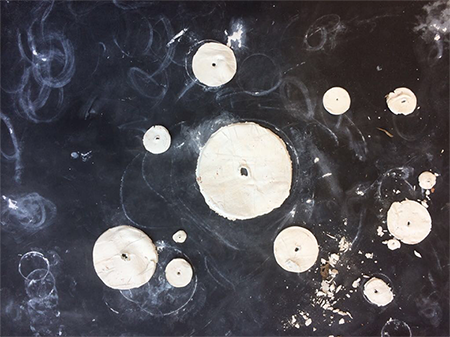
A creation in mixed media for free expression
Creating connection
The workshops were designed to encourage exploration and discussion of issues related to body image and sexuality, as well as feelings of loss and grief. People taking part were invited to open up about how these things affected their perceptions of who they were and how they were perceived by others. The sessions were led by two play/creative arts therapists. Play/creative arts therapists are trained in the personal-centred approach to therapy developed by Carl Rogers,3 which is structured around three core conditions:
• Congruence (genuineness)
• Unconditional positive regard (accepting and respecting others as they are, without judgement or evaluation)
• Empathy in the therapeutic relationship.
In response to the social isolation ostomates often experience, the workshops were centred on the creation of something in the presence of others. Participants had the opportunity to give mutual support and build relationships with each other. They also aimed to encourage the ‘contact’ with the therapist described by Lynne Souter-Anderson,4 which refers to when a therapist works intuitively, with a deep level of empathy and understanding, and is attuned to the participant’s needs. This emotional holding and containment was fundamental to the process, as it is through empathy that people make their deepest connections. In consideration of the ethical responsibility to do no harm and recognise how the work could affect the participants, the sessions ended with a closing meditation to help everybody settle and feel more grounded before leaving.
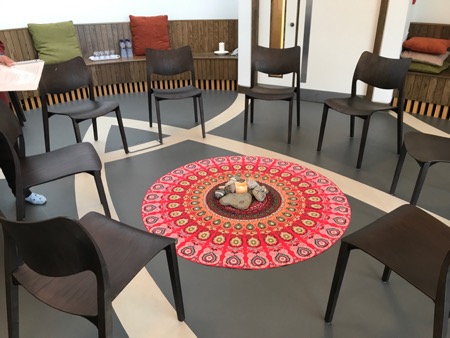
Space was provided for group discussion
Sculpting and drawing
The sessions centred around a series of creative tasks set by the therapist, which at first were structured and then more open. The tasks all encouraged participants to use artistic materials to tell the story of their illness and create something that depicts how it feels to live with a stoma. Certain strong emotions can be difficult to make sense of and articulate as a verbal response to a direct question. However, these emotions can be more easily understood and expressed by physically attaching them to a created image or object, and the creative process allows us to explore and identify emotional themes. The people taking part often found this to be a safer and less personal experience than simply talking about themselves. What is more, by attaching their emotions to their creation rather than their sense of self, and then describing their work, participants found those emotions easier to speak about. This reminded me of Thompson and Neimeyer’s observation that it is the very experience of art making, of shaping the materials, that restores people to their authentic way of being.
For the first workshops, clay was the creative medium of choice. This was inspired by Souter-Anderson’s description of how the process of touching and playing with clay allows the body and mind to work together as one in creating a concrete concept. As an especially sensory and tactile material to work with, creating with clay can deepen and enhance a person’s thoughts and feelings. As well as sculpting with clay, later workshops involved painting and drawing with crayons, pastels and chalk and mixed media. Free drawing can enhance creative expression in a number of ways. For example, body mapping encouraged participants to draw their own bodies and, in the process, connect with their bodies, emotions and experiences.
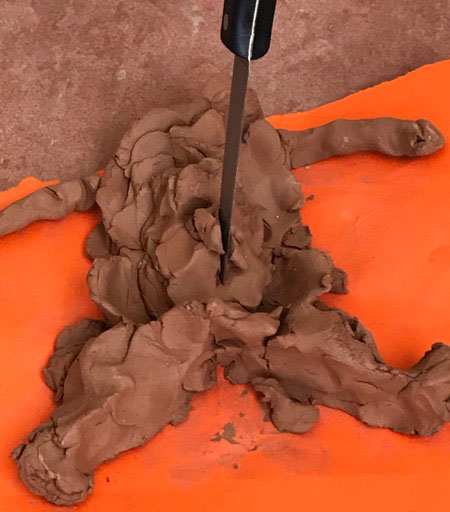
A creation in clay depicting the trauma of surgery
Then the letting go
Towards the end of the sessions, participants were given the choice to bring their artwork home or allow the facilitators to dispose of it in a ritualistic and respectful manner. Clay pieces were placed in a river to dissolve and return to the earth, while drawings were burned. As Cynthia Hypki and colleagues explained, this kind of ritual can act as a container for the expression of strong feelings and emotions.5
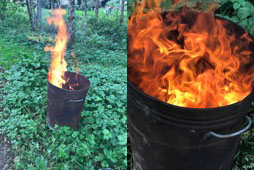
The ritual burning of workshop creations
Confronting loss
When I looked the evidence, there was nothing to suggest that confronting loss and other difficult subjects through creative arts therapy leaves people feeling worse. In fact, research on creative arts therapies suggests that expressing feelings, even those related to something negative, is, overall, a positive experience that provides a sense of relief.5
Those of us running the sessions did our best to recognise the effect that grief and loss had on individuals, and participants were encouraged to let us know if they felt overwhelmed. Throughout the session, those taking part were allowed time to discuss topics between themselves, and after each exercise everyone had a chance share their own experience with the group.
Hearing back
We felt it was important to ask participants’ opinions on the quality and value the sessions, so we could make sure future workshops met peoples’ needs. Therefore, we handed people an evaluation form as they left.
One person wrote that that the workshop was ‘liberating and gave me the courage to talk’. From what participants told us, they believed that creative art mediums had provided the courage to talk, and they felt a strong sense of emotional holding and safety within the group. What’s more, they thought it was important to meeting others with similar issues and hear their stories and many said they wished to attend more than one workshop.
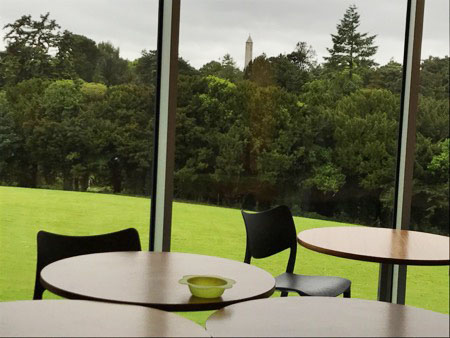
A venue in a peaceful setting was chosen
Conclusion
Stoma formation is often experienced as a loss, which can leave people feeling anxious, fearful and isolated, often causing problems with body image and sexual intimacy. We found research that showed how expressing a personal story through creative arts therapy could be a helpful part of recovery. Setting up creative arts workshops provided a safe and supportive environment for ostomates to draw on these often-painful emotions and express those feelings to themselves and others.
The workshops provided a shared experience in a safe space for giving support and building relationships within a group. The people who took part in the workshops reported positive changes in their sense of self. We value participants’ opinions, as we want to make sure that future events are adapted to meet their needs and are accessible to all. We hope that with time both stoma support groups and stoma care professionals consider creative arts therapy as a safe way to process the grief and loss surrounding illness and surgery.

Madeleine Grant is a stoma care nurse and accredited play/creative arts therapist, based in Ireland
www.wicklowplayandcreativeartstherapy.com

